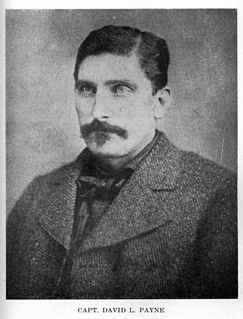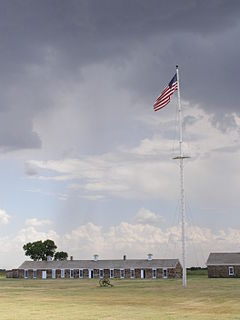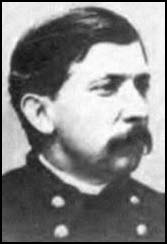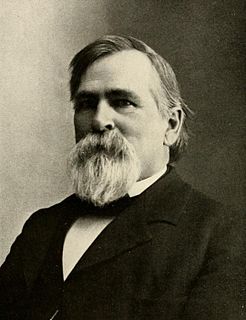
George Armstrong Custer was a United States Army officer and cavalry commander in the American Civil War and the American Indian Wars.

The American Indian Wars, also known as the American Frontier Wars, the First Nations Wars in Canada, and the Indian Wars, were fought by European governments and colonists, and later by the United States and Canadian governments and American and Canadian settlers, against various American Indian and First Nation tribes. These conflicts occurred in North America from the time of the earliest colonial settlements in the 17th century until the early 20th century. The various wars resulted from a wide variety of factors. The European powers and their colonies also enlisted allied Indian tribes to help them conduct warfare against each other's colonial settlements. After the American Revolution, many conflicts were local to specific states or regions and frequently involved disputes over land use; some entailed cycles of violent reprisal.

The Battle of Washita River occurred on November 27, 1868, when Lt. Col. George Armstrong Custer's 7th U.S. Cavalry attacked Black Kettle's Southern Cheyenne camp on the Washita River.

David Lewis Payne was an American soldier and pioneer. Payne is considered by some to be the "Father of Oklahoma" for his work in opening the state to settlement.

Fort Larned National Historic Site preserves Fort Larned which operated from 1859 to 1878. It is approximately 5.5 miles (8.9 km) west of Larned, Kansas, United States.

Frederick William Benteen was a military officer who first fought during the American Civil War. He was appointed to commanding ranks during the Indian Campaigns and Great Sioux War against the Lakota and Northern Cheyenne. Benteen is best known for being in command of a battalion of the 7th U. S. Cavalry at the Battle of the Little Bighorn in late June, 1876.

The 1st Cavalry Regiment is a United States Army regiment that has its antecedents in the early 19th century in the formation of the United States Regiment of Dragoons. To this day, the unit's special designation is "First Regiment of Dragoons". While they were the First Regiment of Dragoons another unit designated the 1st Cavalry Regiment was formed in 1855 and in 1861 was re-designated as the 4th Cavalry Regiment. The First Dragoons became the 1st Cavalry Regiment since they were the oldest mounted regiment.

James William Forsyth was a U.S. Army officer and general. He was primarily a Union staff officer during the American Civil War and cavalry regimental commander during the Indian Wars. Forsyth is best known for having commanded the 7th Cavalry at the Wounded Knee Massacre on December 29, 1890 during which more than 250 men, women, and children of the Lakota were killed and more than 50 were wounded.

Fort Reno also known as Fort Connor or Old Fort Reno, was a wooden fort established on August 15, 1865 by the United States Army in Dakota Territory in present-day Johnson County, Wyoming. The fort was built to protect travelers on the Bozeman Trail from Native American tribes.

The Battle of Beecher Island, also known as the Battle of Arikaree Fork, was an armed conflict between elements of the United States Army and several of the Plains Native American tribes in September 1868. Beecher Island, on the Arikaree River, then known as part of the North Fork of the Republican River, near present-day Wray, Colorado, was named afterwards for Lieutenant Fredrick H. Beecher, an army officer killed during the battle.

Fort Hays, originally named Fort Fletcher, was a United States Army fort near Hays, Kansas. Active from 1865 to 1889, it was an important frontier post during the American Indian Wars of the late 19th century. Reopened as a historical park in 1929, it is now operated by the Kansas Historical Society as the Fort Hays State Historic Site.

Alfred Gibbs was a career officer in the United States Army who served as a brigadier general in the Union Army during the American Civil War.

Horace Ladd Moore was a U.S. Representative from Kansas.

Samuel Johnson Crawford was a Union Army officer during the American Civil War, and the third Governor of Kansas (1865–1868). He also served as one of the first members of the Kansas Legislature.

George Alexander Forsyth was a United States military officer most notable for his service in the cavalry.
Clara Blinn (1847–1868) was a white settler who, with her two-year-old son Willie, was captured by Indians in October 1868 in Colorado Territory during an attack on the wagon train in which she and her family were traveling. She and her little boy were killed on or about November 27, 1868 during or in the immediate aftermath of the Battle of Washita River, in which the camp of the Cheyenne chief Black Kettle was attacked and destroyed by troops of the Seventh U.S. Cavalry under the command of Lt. Col. George Armstrong Custer. Clara and Willie Blinn's bodies were found some two weeks after the fight in one of several abandoned Indian camps along the Washita River near present-day Cheyenne, Oklahoma.
The 11th Kansas Volunteer Cavalry Regiment was a cavalry regiment that served in the Union Army during the American Civil War.

Louis Henry Carpenter was a United States Army brigadier general and a recipient of the Medal of Honor for his actions in the American Indian Wars.
The 2nd Ohio Cavalry Regiment was a cavalry regiment that served in the Union Army during the American Civil War.

Simpson Everett Stilwell was a United States Army Scout, Deputy U.S. Marshal, police judge, and U.S. Commissioner in Oklahoma during the American Old West. He served in Major George A. Forsyth's company of scouts when it was besieged during the Battle of Beecher Island by Indian Cheyenne Chief Roman Nose and was instrumental in bringing relief to the unit.
















